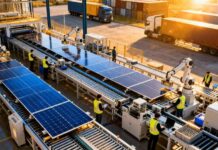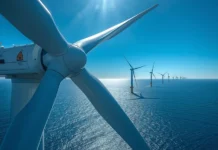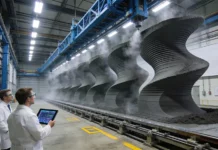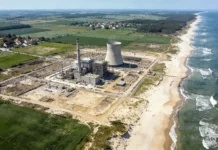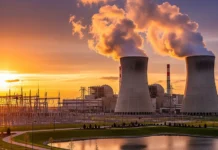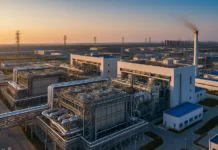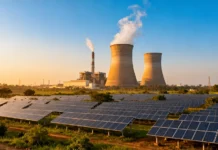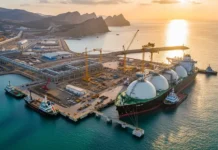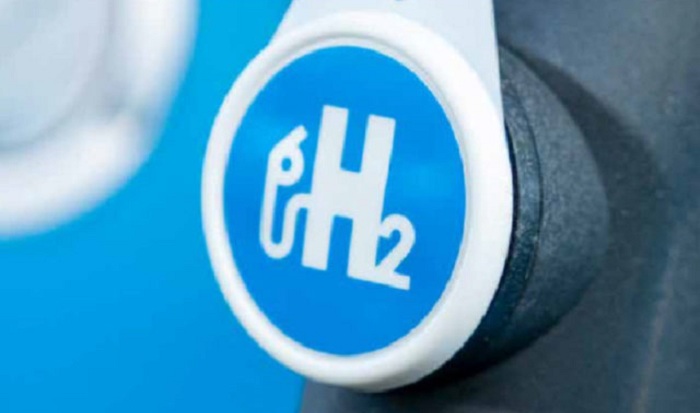The Hydrogen and Fuel Cell Technologies Office- HFTO of the US government looks to drive the cost pertaining to proton exchange membrane- PEM electrolysers to a quarter of their present cost within two years, as per the latest multi-year program plan.
The agency happens to be the office of the Department of Energy for H2 research, development, and deployment, with a budget of $301 million for 2024. It also targets an uninstalled capital cost worth $250/kW pertaining to PEM electrolysers with a lifetime of 80,000 hours and a 51 kWH per kg energy efficiency by 2026.
Apart from this, the DOE has already gone on to announce a $8 million funding round in terms of research and development, and also deployment of electrolysers as well as fuel cells to partners in its Roll to Roll consortium of labs.
It is well to be noted that Plug Power has agreed to supply almost 3 GW of electrolyzers to Allied Green Ammonia- AGA for a planned hydrogen-to-ammonia facility in Australia’s Northern Territory. By May 2024, the basic design and engineering package is expected, with the final funding decision anticipated by Q4 of 2025. Plug Power aims to begin delivering 3GW electrolyzers starting in Q1 of 2027.
Apart from this, the Dutch government has gone on to state that seven of its projects are currently underway to manufacture completely renewable hydrogen backed by subsidies. The project is going to collectively offer 101 MW of electrolysis capacity. The hydrogen is going to be used for refueling stations and by the chemical sector.
Besides, Bilfinger as well as H-TEC have gone on to agree to collaborate so as to develop large-scale green hydrogen projects across Europe. Under the agreement, both parties look forward to considering working in sync as preferred partners for projects that are suitable, wherein both happen to see value creation that’s mutual.
The HFTO, in a way, plans to drive down the cost further concerning the technology to $100/kW, with efficiency touching 46 kWh/kg, between 2029 and 2036.
Based upon the applications for the Regional Clean Hydrogen Hubs program costing $7bn, the present average installed cost for the PEM electrolysers happens to be almost $1900/kW, and the government figures suggest $1000/kW of capital cost for the equipment that is uninstalled. But the agency also goes on to argue that its prior funding when it comes to research and development had slashed the capital cost of PEM systems by over 90% between the early 2000s and 2020.
It is well to be noted that over half of the planned decrease in cost is anticipated to come from scaling-up manufacturing. The agency goes on to target 3 GW or above of electrolyser manufacturing capacity in another couple of years sans mentioning the split when it comes to specific tech.
Apart from this, some more cost savings happen to be predicted due to innovations in stack and balance-of-plant technology as well as greater system-integration optimisation like decreasing the use of platinum group metals- PGMs which happen to be the key catalyst for the PEM electrolysers.
It is well to be noted that while PEM technology at present goes on to use almost 0.8 grams of PGMs per kW of capacity, the HFTO looks forward to slashing this to 0.1 g/kW by 2026 and thereby reaching 0.03 g/kW.
But the agency goes on to note that while cutting down on PGMs would go on to reduce supply chain costs, it may also go on to lead to worse-performing electrolysers, thereby suggesting a dire need for trade-offs.
Meanwhile, the US government happens to be even more ambitious when it comes to cost reductions as far as solid oxide electrolysers- SOEs are concerned, which at present cost almost $2,500/kW.
Interestingly, by 2026, HFTO goes on to target $500/kW for these systems, thereby cutting the capital cost to $200/kW by 2031. Although the agency goes on to estimate that the SOE stacks at present have a lifetime of 20,000 hours, it looks forward to doubling this by 2026 and hence achieving a stack life of 80,000 hours.
Next-gen technology
The HFTO, in a way, is also looking forward to exploring novel technologies when it comes to producing hydrogen, such as:
Solar thermochemical hydrogen- STCH that is based on a solar-powered two-step chemical reaction pertaining to metal oxides as well as steam in order to produce hydrogen;
Photoelectrocatalysis- PEC, which makes use of solar power to split water into hydrogen and oxygen directly by way of photocatalysts
Fermentation as well as microbial electrolysis, in which hydrogen gets generated through living organisms directly or through technologies that go on to pass an electric current across the acids generated throughout the decay in order to produce hydrogen.
While all such kinds of technologies happen to be still at the laboratory-scale, HFTO looks forward to funding further research and development in the coming years with the aim of demonstrating by 2031, feasibility of all three going on to produce H2 for less than $2/kg.
Fuel cells
Meanwhile, the HFTO also looks forward to major enhancements in performance as well as the cost of fuel cells in this decade, with priority in the short term for PEM fuel cells for their usage in medium as well as heavy-duty vehicles.
With PEM electrolysers, the biggest cost dip is most likely to come from the scaling up of manufacturing, with the agency setting a target of 20,000 stacks pertaining to heavy vehicles per year by 2030 in order to drive the cost down to $80/kW from $170/kW.
Fuel cells for stationary power go on to cost between $1,200 and $2,500 per kilowatt of the capacity, with an efficiency of 40-60%. The HFTO looks forward to bringing the cost down to $1,000/kW and also soaring the efficiency to 65% by the end of the decade while making sure of a product lifetime much closer to the present maximum of 80,000 hours.
It also looks forward to developing or demonstrating by 2027-
60%-efficient hydrogen fuel-cell power system for distributed power and energy storage applications coming at a cost of $1,000/kW with durability of 40,000 hours;
60%-efficient hydrogen fuel-cell power system- 1–10 kW pertaining to backup power applications costing $1,000/kW with durability of 10,000 hours;
A medium-scale combined-heat-and-power fuel-cell power system of 100 kW–3 MW that can achieve more than 50% electrical efficiency, 90% combined heat as well as power efficiency, and 80,000 hours of durability comes at a cost of $1,500/kW for operation pertaining to biogas.
In a similar way, the agency has also set out targets pertaining to reversible fuel cells, i.e., stacks that can go on to be used as either electrolysers or fuel cells, which depends completely on which way electric current goes, which, as per the HFTO, could be a promising choice for energy storage. However, at present, the round-trip efficiency is just around 37%, with a levelised cost of storage- LCOS of $1.10/kWh.
As such, the agency looks forward to the fact that by 2030, this tech will go on to achieve a round-trip efficiency of 60% as well as LCOS of $0.10/kWh.




